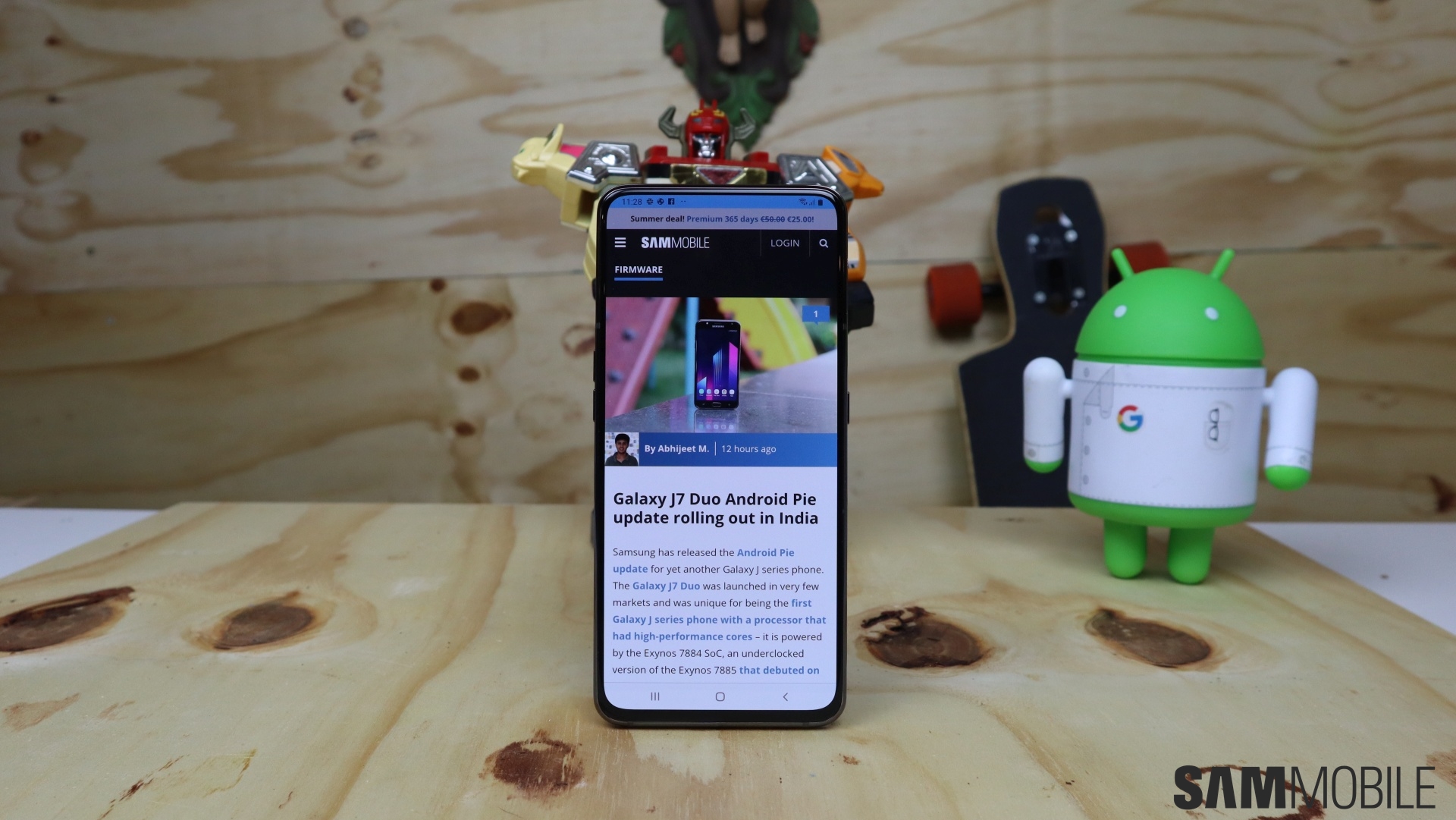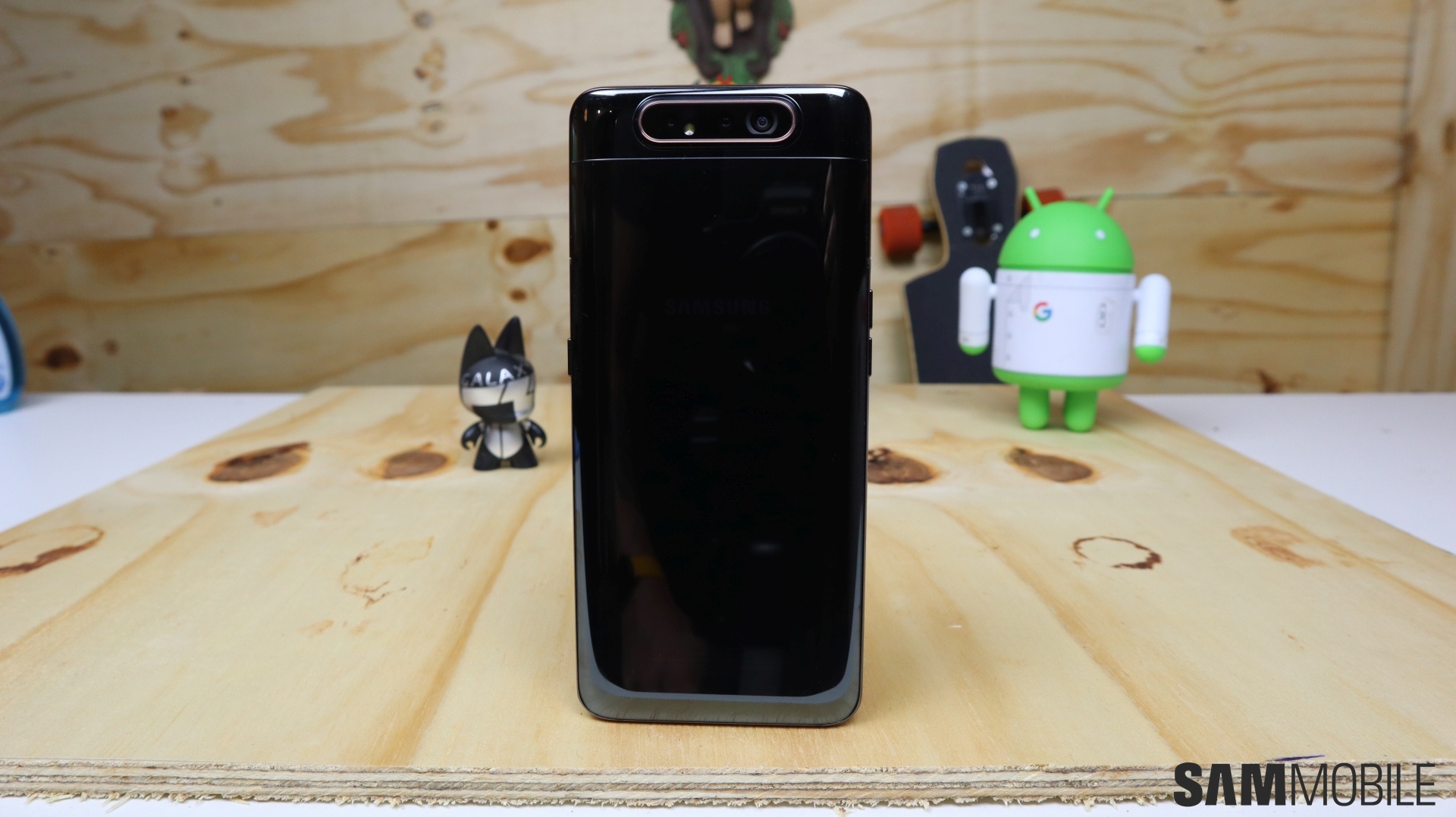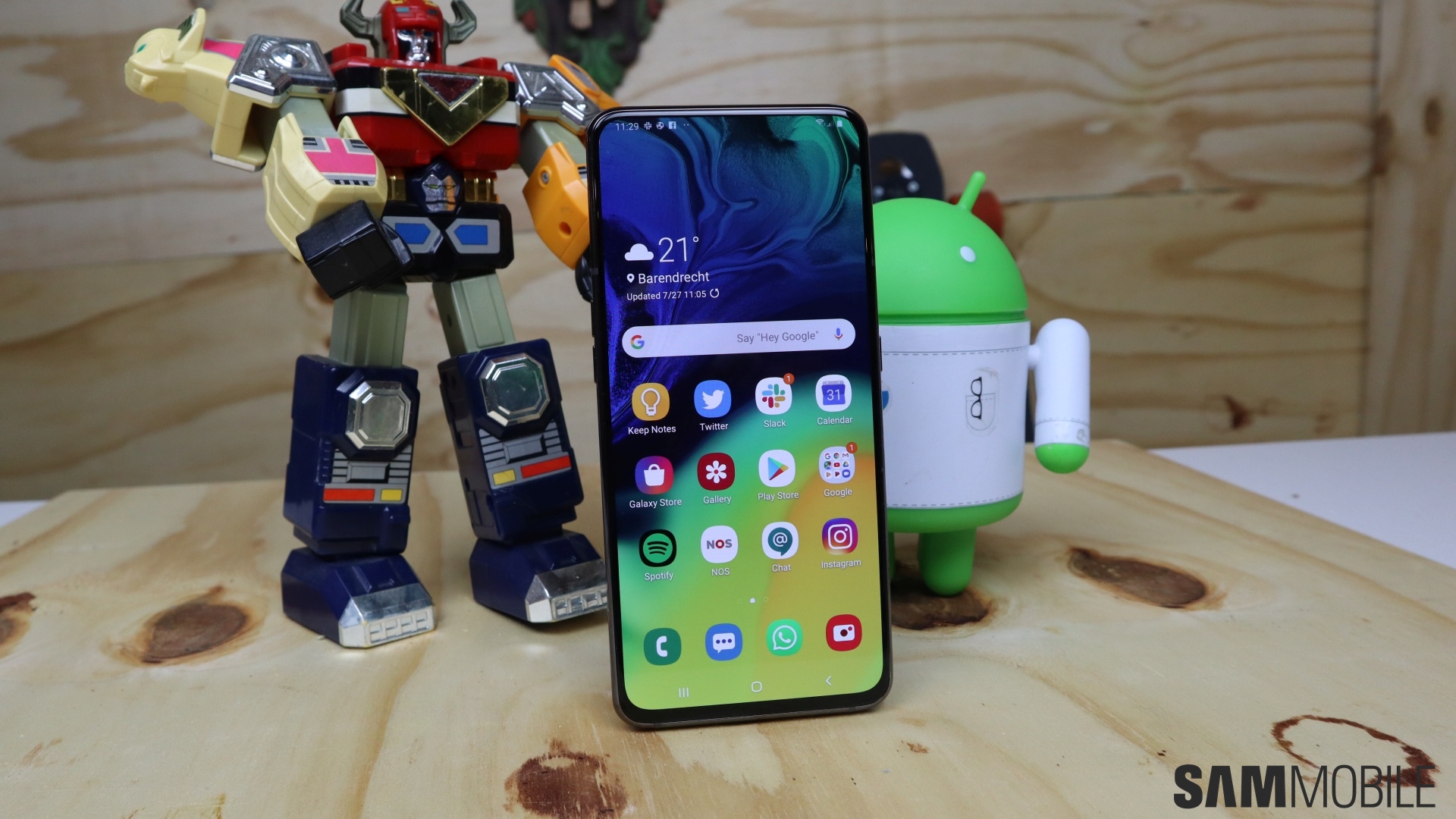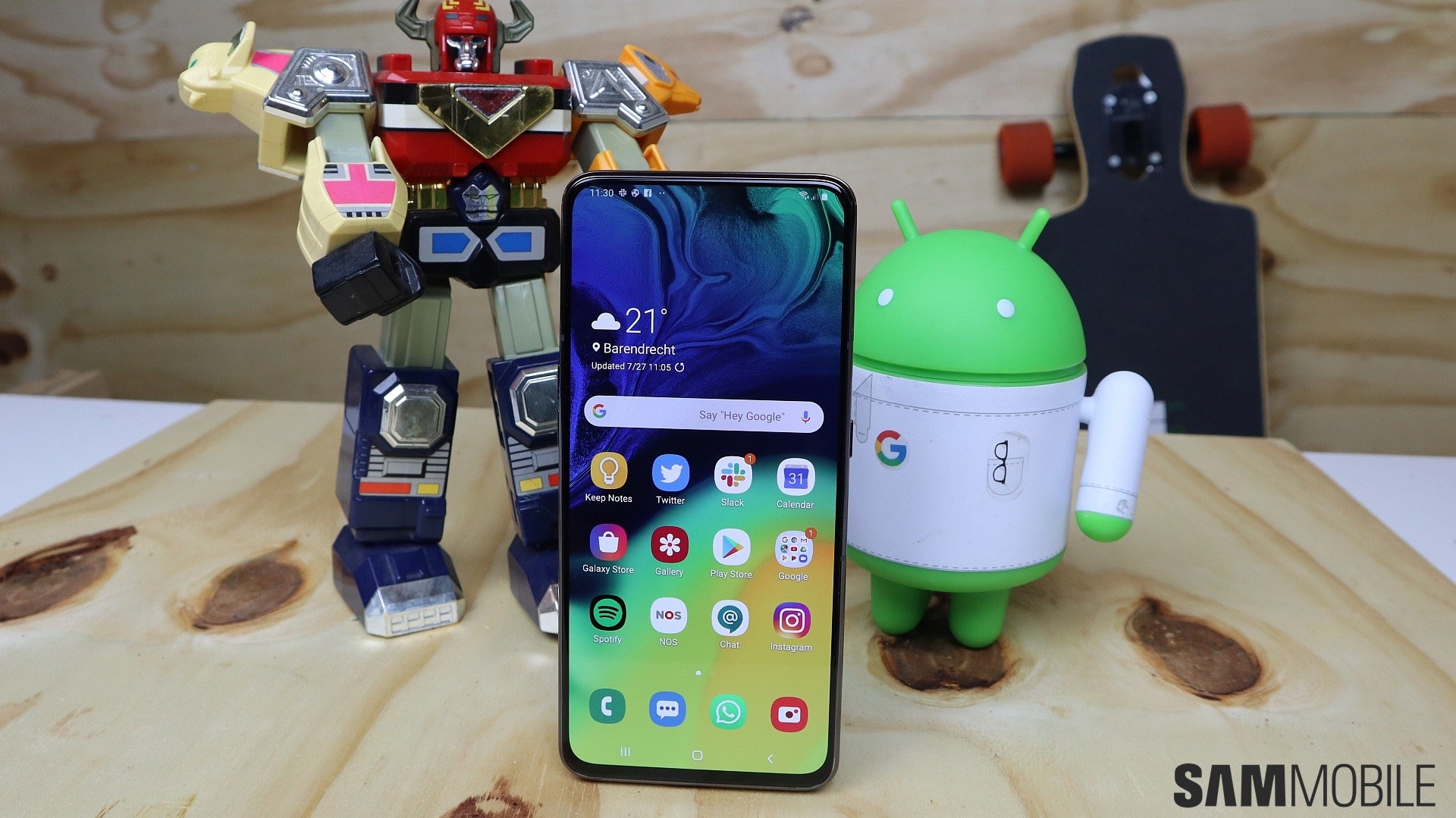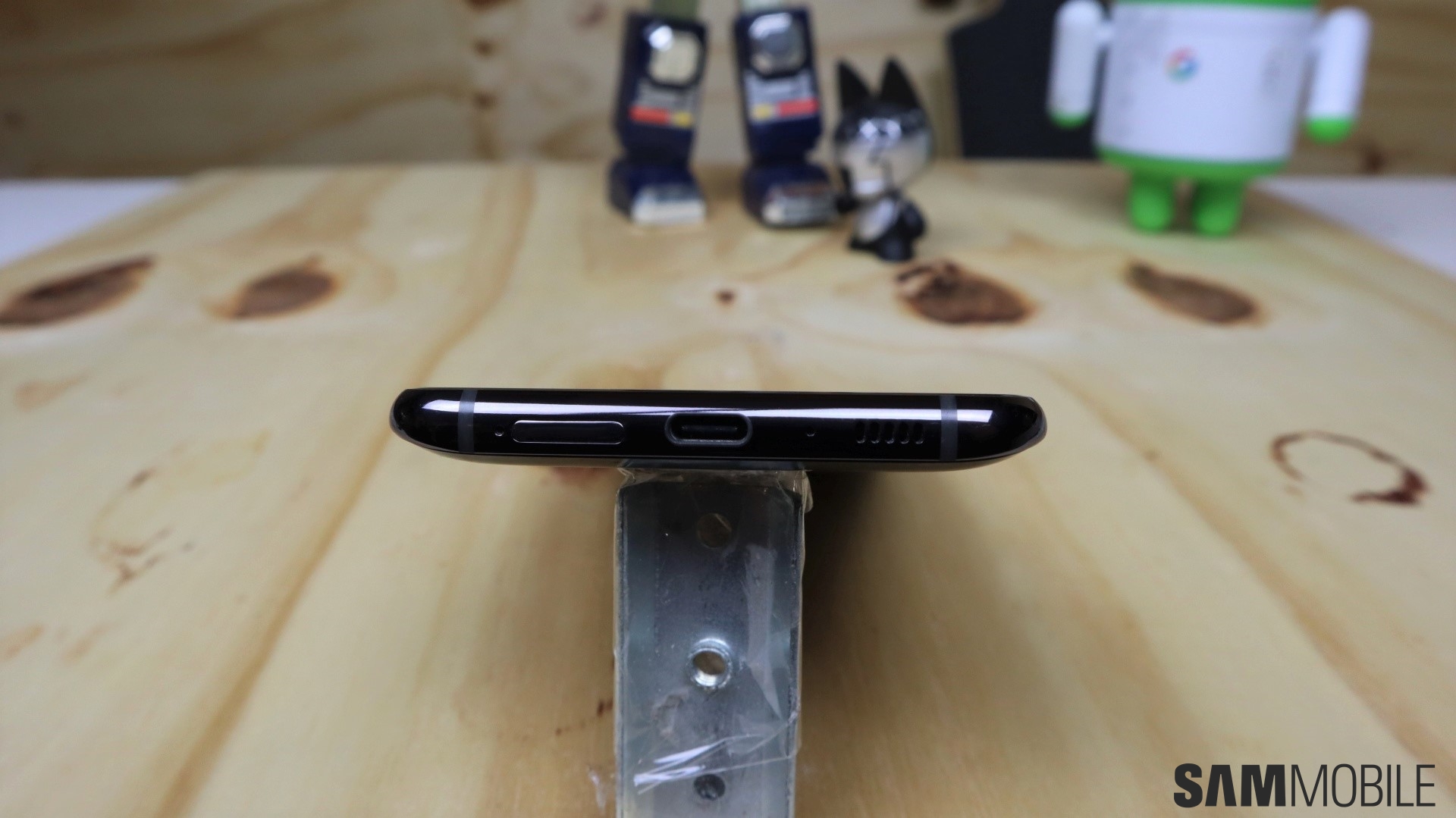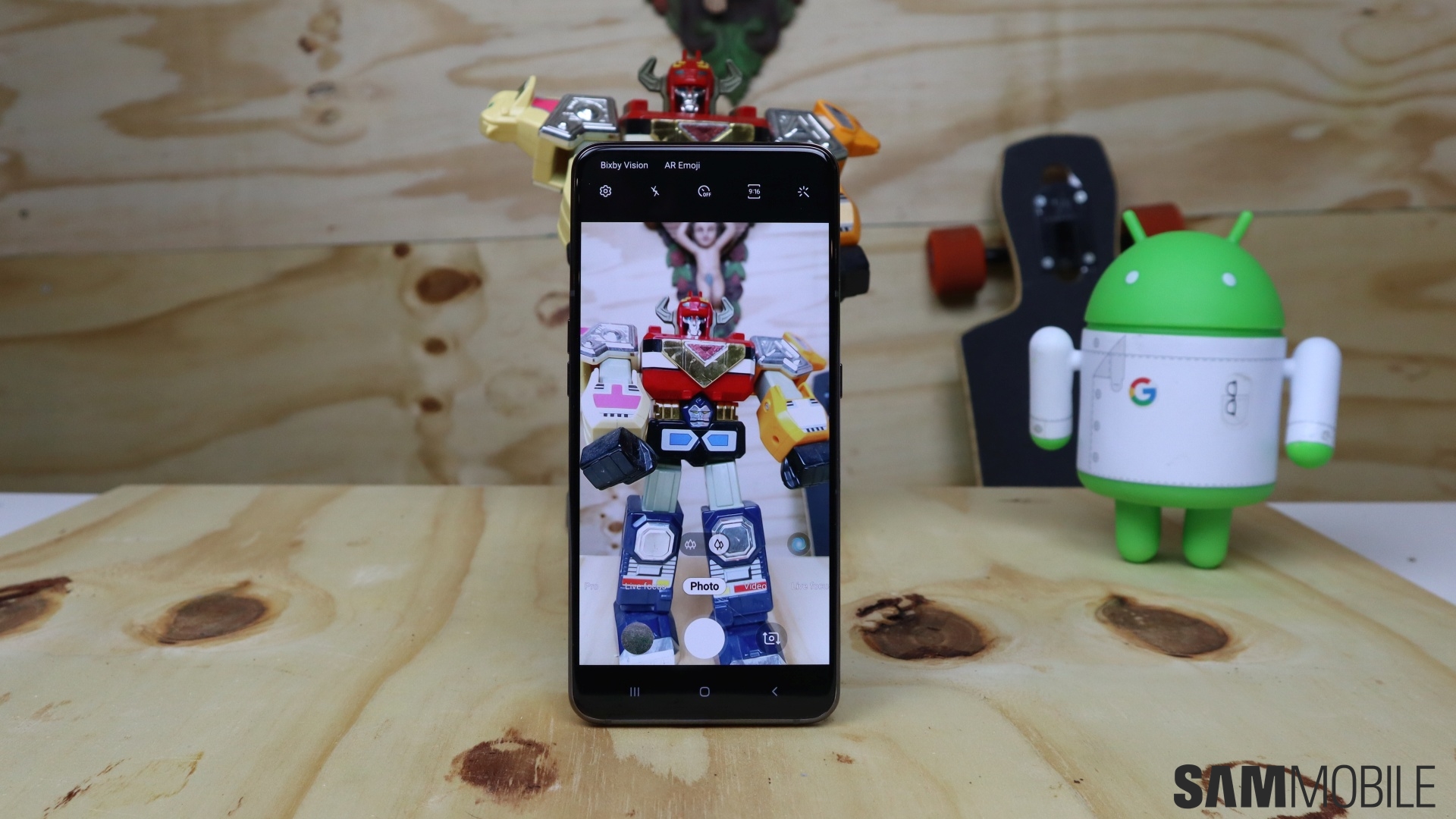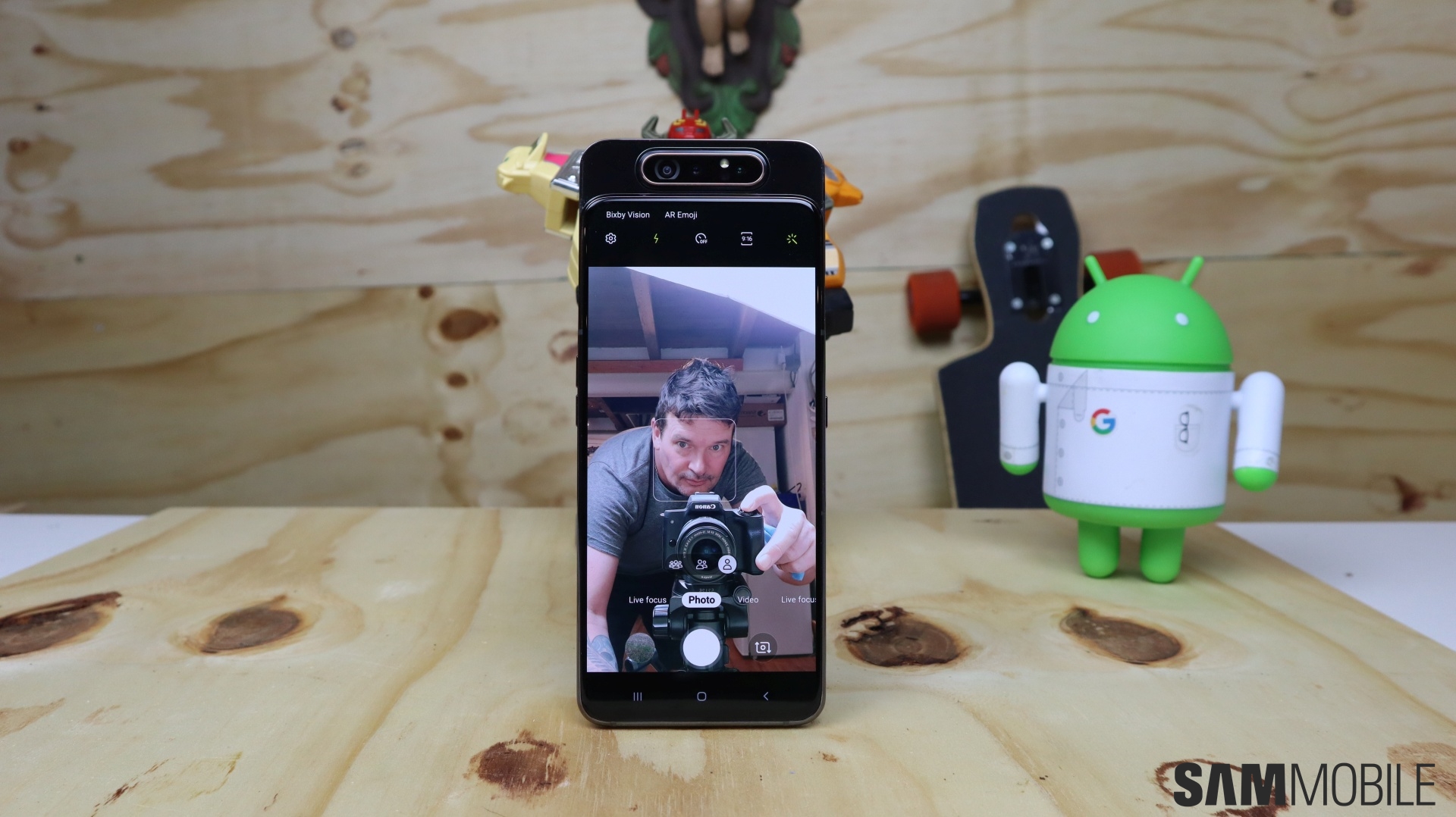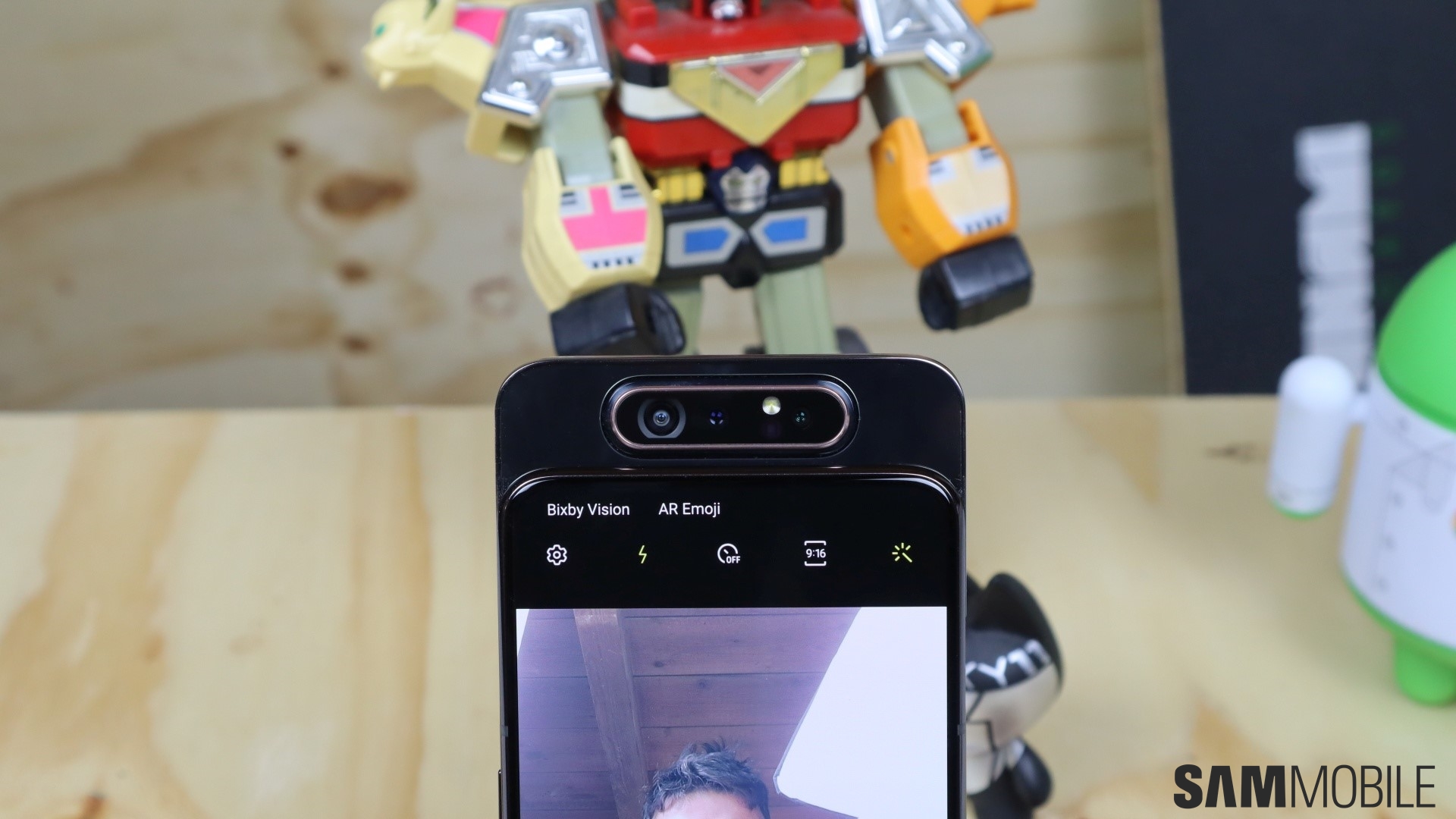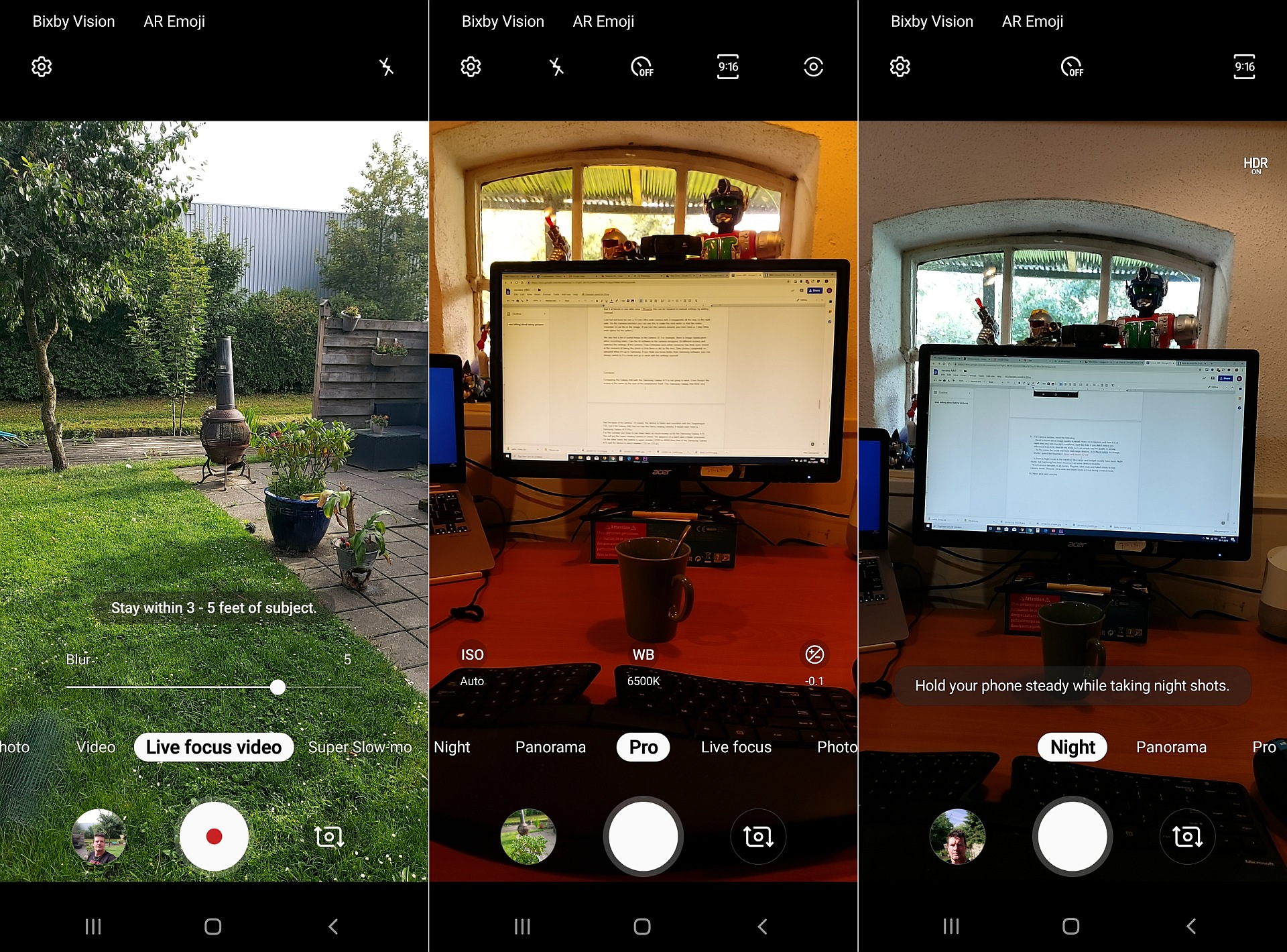Samsung Galaxy A80 review: Cool sliding camera fails to impress
It seems the endless barrage of Galaxy A series phones we have seen this year has almost come to an end. Most of those phones are slight variations of each other, with Samsung wanting to provide an option for every kind of customer. If you have a short checklist and want a smartphone for a low price, you can choose anything under the Galaxy A50. If specs matter to you and you don't mind paying a bit more, you can take a look at the options above the Galaxy A50.
The Galaxy A80, however, is a special case. It's an experiment for Samsung – the company came up with the idea of a pop-up and sliding camera after seeing all the devices from competitors with similar camera setups, allowing a notch and cutout-free display. Samsung is rather late to the party, of course, and today we see if the Galaxy A80 is a device that's worth considering for your next smartphone purchase.
Galaxy A80 review: Design
When you see the Galaxy A80 and start using it for the first time, as a long-time user of Galaxy phones, you'll have to get used to the device. I say that in a positive light, as the A80's front is adorned with a beautiful AMOLED screen without a cutout or notch and very thin bezels. The design on the back, however, differs a lot from what we're used to seeing on Galaxy devices, and the camera module always makes its presence felt.
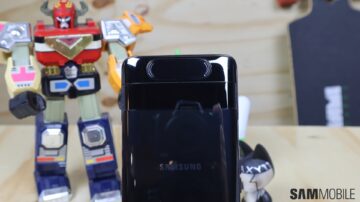
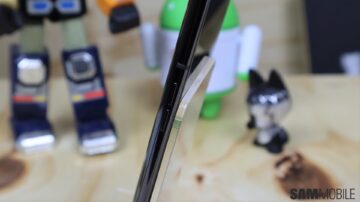
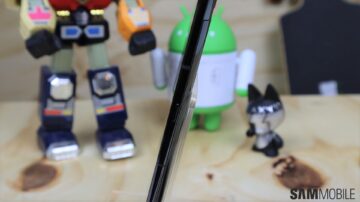
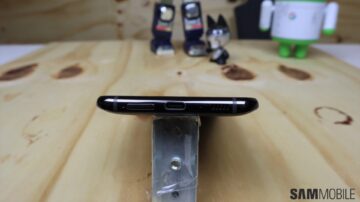
The Galaxy A80 has a glass back like Samsung's flagship offerings, although it felt more like one of those "glasstic" backs from other A series phones, like the Galaxy A50. I tested the Phantom Black version of the phone, and like the other color options, this one has no gradient effect. The material is very reflective, though, and you can literally use it as a mirror to comb your hair in the morning. Combined with Samsung's subtle logo at the center, the Galaxy A80 looks classy and beautiful from the back.
The Galaxy A80 doesn't get a Bixby key, only the usual volume buttons (on the left side) and the power button (on the right side). Thanks to the sliding camera mechanism, Samsung has shifted the SIM card slot to the bottom of the phone, next to the USB Type-C port. Yes, the SIM slot is in the spot where a 3.5mm headphone jack would be – there's no headphone jack on this phone, nor a microSD slot. And Samsung isn't bundling a 3.5mm to USB Type-C converter in the box, so you'll have to spend extra to get a converter for using your existing wired headphones.
Galaxy A80 display
Together with the camera, the screen is one of the main highlights of the Galaxy A80. It's a beautiful AMOLED display with no cutouts or other interruptions, and it has a long, fancy name: Samsung calls it 'Full HD+ Super AMOLED New Infinity Display.' The display is worthy of that long name, though. It has fantastic colors, and the 6.7 inches of uninterrupted screen estate make it a pleasure to use, especially for watching Netflix or YouTube videos. If there's one Samsung phone that does justice to the Infinity Display branding, it's this one.
However, there is one disadvantage of the small bezels: unintended touches. I touched the screen by mistake quite often when I held it in landscape orientation. If you curl your fingers a little too far, you can operate the screen and rewind YouTube, for example. It might just be my hands that make this a problem, but the small bezels do have a downside that you might want to keep in mind, especially if you have large hands.
The Galaxy A80's display hides two important features underneath: a fingerprint sensor and an earpiece for calls. The fingerprint sensor is an optical one – we were not pleased with the optical in-display fingerprint sensor on the Galaxy A70, and it's not much better on the Galaxy A80. All too often I had to put my finger down again to unlock the phone, and 5 to 10 percent of the time, I had to unlock using my PIN. I don't think the in-display fingerprint sensor tech is mature enough. I do know other brands have slightly better implementations, so Samsung really needs to work on it.
The same goes for Sound On Display technology. It didn't work well on the Galaxy M40, and it's as bad on the Galaxy A80. First off, you have to get used to the placement of the speaker – the part of the screen that emits the sound during calls is a bit lower than a traditional earpiece would be. Secondly, calls sound very dull and quiet, and you have to really press the phone to your ear at times to hear what's being said or even switch to the loudspeaker. Sound On Display tech sounds exciting, but its real-world performance is mediocre at best.
Galaxy A80 performance and battery life
A Qualcomm Snapdragon 730 processor with eight cores does the heavy lifting on the Galaxy A80, accompanied by 8GB of RAM and 128GB of internal storage. I used the Galaxy A70 before this phone, and I must say the A80 performs noticeably better than its cheaper sibling, which uses a Snapdragon 675 SoC. The Snapdragon 730 enables a quick and smooth user experience and does well with all kinds of games, and while some competing phones in the same price range use flagship processors, I would say the Snapdragon 730 is totally fine in real-world performance.
With such a large screen, you need a large battery to ensure you get through to the end of the day on a single charge. The Galaxy A80 has a 3,700 mAh battery and it falls just a bit short of providing a full day of juice. I didn't succeed very often – it could only reach the end of the day with mild to moderate use. Heavy use will require the phone to be charged by 8 PM, especially if you travel a lot and work on mobile data like me. Thankfully, the A80 supports 25W super fast charging, and the not-so-large battery goes from 0 to 100 percent in around 80 minutes.
Galaxy A80 software
The Galaxy A80 comes running Android 9 Pie with Samsung One UI, and it's a great software experience overall. One UI is beautiful, and you get version 1.1 of it on the A80, with features like Bixby Routines and Digital Wellbeing. There's no option to fire up Bixby Voice using the power button, but we're sure Samsung will add that with a software update later on, as the Galaxy A50 and Galaxy A70 both support it. You also get features like a blue light filter, one-handed mode, a system-wide Night mode, Always On Display, and navigation bar gestures.
Many of those features have been around for a long time, while others — like Night mode — come courtesy of One UI. The Galaxy A80, like all other Samsung devices, should get two major Android OS updates. As far as security updates are concerned, the A80 is scheduled to get them quarterly, not monthly. That's disappointing for a device as pricey as the A80 (it costs 649 euros in Europe), and also when you consider some older mid-range phones (like the Galaxy A5 (2017) and Galaxy A8 (2018)) still get monthly updates.
Galaxy A80 audio quality
The sound from the single loudspeaker on the Galaxy A80 is pretty good. There's noticeable oomph to the low frequencies (bass) for a single speaker, and it's also quite loud and clear. Many will be disappointed by the absence of a 3.5mm headphone jack, though. To compensate for that, Samsung has added USB Type-C earphones in the box. These earphones have decent quality and are suitable for daily use, especially with Dolby Atmos enabled. As mentioned earlier, there's no 3.5mm to USB Type-C converter in the box, so you will have to get one yourself to use all your existing wired headphones and audio gear.
Galaxy A80 cameras
Finally, we come to the camera, the most important and standout feature of the Galaxy A80. The A80's camera system is revolutionary, to say the least, especially for Samsung. We've seen similar systems before, but Samsung has made it more complicated. When you activate the selfie camera, the camera unit slides up from the back. And as it extends, it rotates the camera modules 180 degrees, letting you use the same sensors that you use for photos of the world for capturing selfies.
Being able to use the same camera setup for both landscapes and selfies is a good thing, but the process of sliding out and rotating the camera unit isn't very fast. In addition, it makes an audible noise – in a quiet room, that's a problem. Just imagine yourself in an awkward pose in your gym's yoga class, taking out your phone and switching to the front camera, making everyone else in the room stare at you. The entire sliding and rotating process is fully mechanical, with likely a spring making the camera modules flip forwards and backwards.
I mention this to indicate that the Galaxy A80 has a lot of moving parts when it comes to its cameras, so there's a greater chance something will break. There are also many ways the rotating camera can fail. It's a complex system with plenty of places where dust and other potentially harmful materials such as sand grains can settle. Especially worrisome are the large holes created on both sides of the phone when the camera assembly has slid up to allow you to take selfies. There's no way these gaps won't be filled with junk in a few months, and I certainly don't want to think about dropping the phone in the sand while taking a selfie at the beach.
In the short time we had the handset, I couldn't test the beach scenario, so we will have to trust Samsung engineers have done their homework well, right? Sadly, they don't seem to have done a solid job. We've already seen the rotating camera mechanism get stuck from time to time while trying to switch to selfie mode and back to rear camera mode. If such niggles are showing up with just a few weeks of use, what kind of long-term durability can we expect?
The Galaxy A80 has a safety mechanism to protect the camera system when the phone falls. When the sensors register the phone is falling down, the camera is retracted. I tested this on the couch and it worked, but it's far from perfect. First of all, the safety mechanism is so slow that you definitely have to make sure the phone falls from at least a height of 1.5 meters. You usually take photos at chest level so that's not a major concern, but the phone does something incredibly stupid after it lands on the ground.
You see, when the phone is in mid-air, the cameras flip back to rear camera mode and then slide down, but as soon as the phone hits the ground and detects no further motion, it tries to slide the camera back out! Imagine the device sliding out the camera assembly as it lies on the ground with its front side up. And that's not the worst part – if you were taking selfies before the phone slipped out of your grasp, it will also try to rotate the cameras back to selfie mode after it hits the ground. You can positively hear the camera motor scream as it tries to complete the rotation but is unable to overcome the ground's resistance. It's an oversight I simply cannot wrap my head around, although it should be fixable with a software update.
There are also some peculiarities in the camera app. Well, it's more about how Samsung isn't using the full opportunities a sliding and rotating camera mechanism makes possible. For instance, if you change a camera setting in one mode, it does not carry over when you switch to the other mode – basically, both rear camera and selfie mode save settings separately. Then there's the fact that Scene Optimizer or the LED flash don't work in selfie mode. I understand you don't always need a bright LED flash for taking selfies, but couldn't Samsung have at least given the user the option to use it for selfies if he so chooses, with perhaps an option to reduce the intensity of the flash?
Okay, now let's talk about camera quality. The A80 has three cameras: A 3D depth camera (a ToF sensor), the main 48MP camera, and the 8MP ultra-wide camera. The 3D depth camera scans the distance to an object by calculating the time it takes for a beam of light to be reflected back from the object, and it enables the use of background blur — Live Focus, as Samsung calls it – in videos. The feature is simply called Live focus video and works pretty well, although the sharpness of the object in focus can be lacking compared to still bokeh pictures.
Speaking of still pictures, the primary 48MP camera with its F2.0 aperture takes excellent photos in daylight, with plenty of detail and true-to-life colors. What I wanted to know is whether the F2.0 aperture makes low-light conditions tougher for the A80 compared to the F1.7 aperture of the A70's 32MP camera, and I found it doesn't make a whole lot of difference. Detail in the background can be lacking in low-light scenes, but otherwise, I didn't think the narrower aperture was a problem overall.




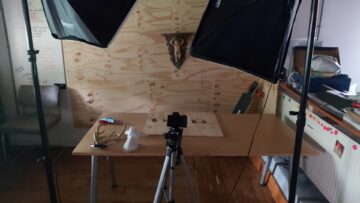



Last but not least, you can use the ultra-wide cameras to take wider pictures of landscapes and yourself. Having an ultra-wide camera for selfies is very useful when you're with a group of friends, although the 8MP sensor can't resolve too much detail (see the comparison shot below) nor does it handle tough lighting situations well, thanks to the F2.2 aperture. The ultra-wide camera also comes handy for the Super Steady video recording feature, which enables action camera-like stability in videos you record and works almost as well as it does on the Galaxy S10 lineup.
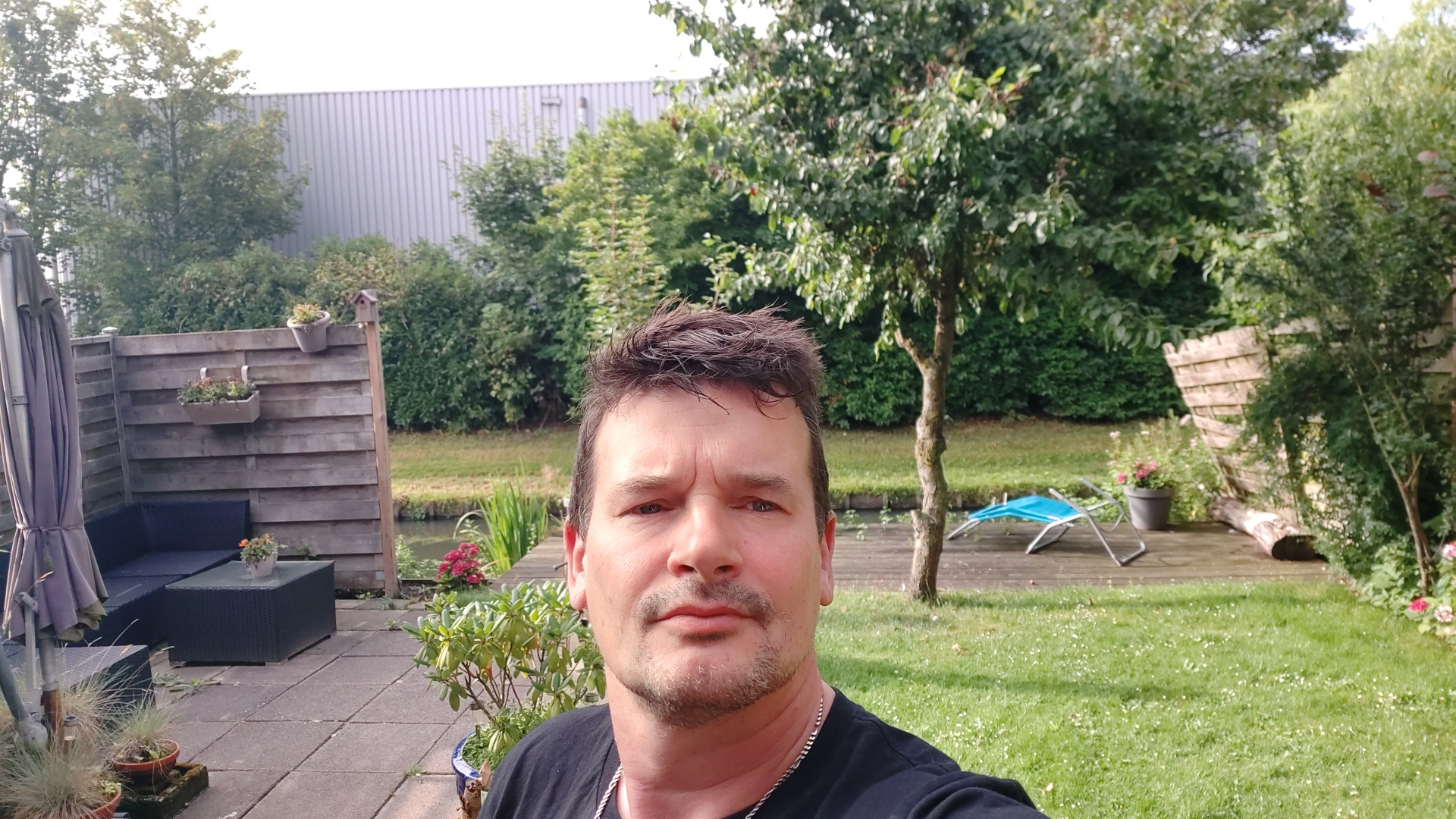
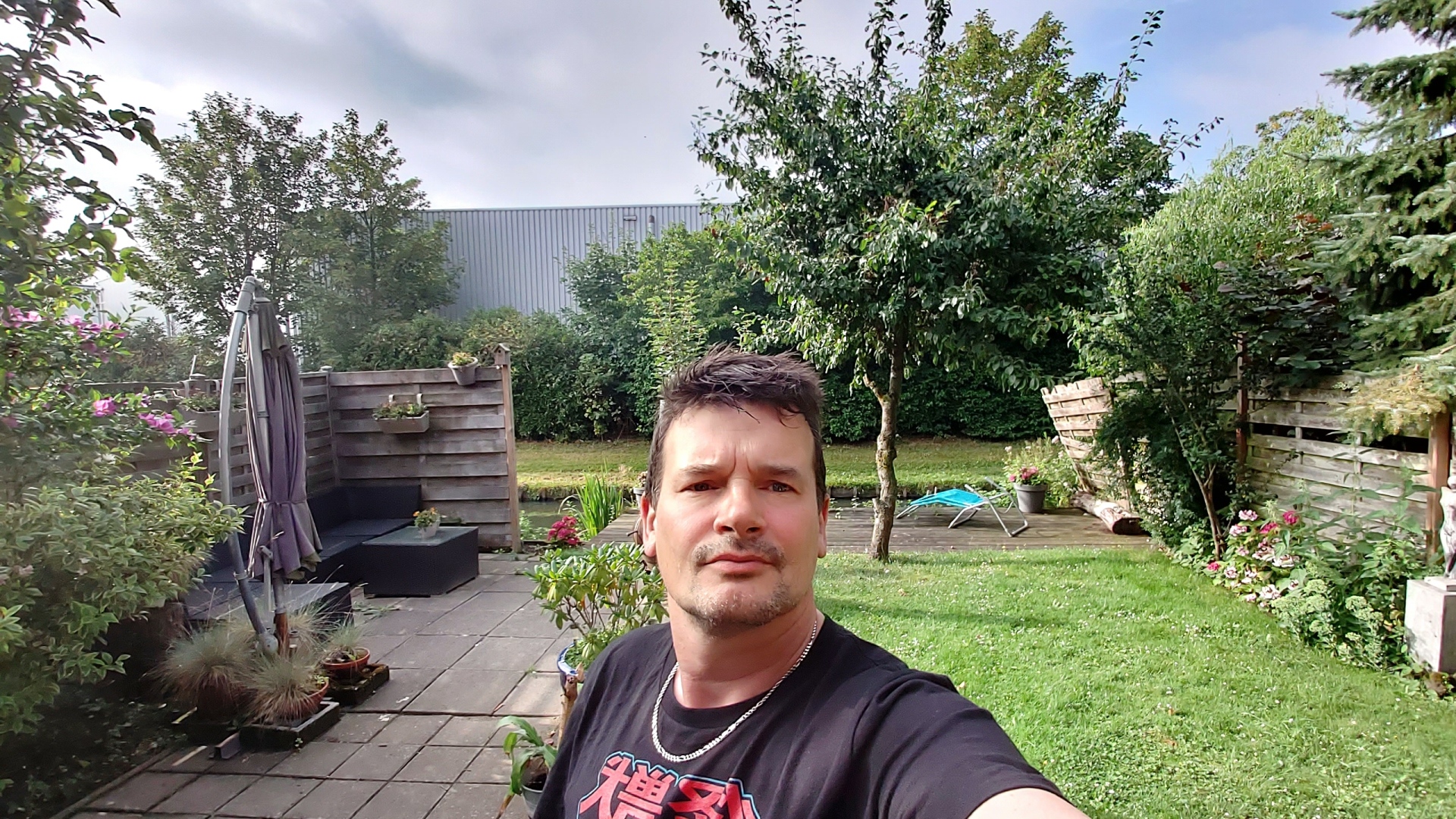
We also find plenty of useful features in the camera. You get Scene Optimizer, which can optimize colors for 30 different types of scenes. Flaw Detection is great for finding out if you need to take a picture again because someone moved or blinked in the last one. There's a dedicated Night mode, although this doesn't really work as well as the Galaxy S10's Night mode. You also get a basic Pro mode so you can modify some camera parameters before taking a shot. There's no shutter speed control, which is a limitation on all non-flagship Galaxy phones.
Galaxy A80 verdict
The Galaxy A80 may be a phone with a beautiful screen that's almost as big as the device itself thanks to the very small bezels, but it's let down by its camera system. The Galaxy A80 is smoother and faster than the Galaxy A70 thanks to the Snapdragon 730, but if it weren't for that fancy rotating camera, the A80 would just have been a Galaxy A70 Plus.
The A80 requires you to put down almost twice as much money as a Galaxy A70. You get the rotating and sliding camera, a faster processor, and a no-notch screen, but you have to compromise with a smaller battery (3,700 mAh on the A80 vs 4,500 mAh on the A70). And sacrifice the microSD slot and a headphone jack. All that would have been fine if the camera implementation was awesome, but it leaves a lot to be desired, especially on the durability front.
If you are looking for the absolute top cameras for your selfies and want to capture bokeh videos, then the Galaxy A80 might be something for you. If you're just looking for a good smartphone, there are other Galaxies that can provide a similar experience for less money.
| Pros | Cons |
| Beautiful AMOLED screen with no cutouts or notches | Vulnerable camera mechanism, odd limitations in camera software |
| Excellent performance with Snapdragon 730 processor | Bigger battery would have been nice |
| High-quality triple camera setup for selfies | No microSD slot or headphone jack |
| Can shoot Live Focus videos thanks to 3D depth camera | In-display fingerprint sensor isn't great |
| 25W fast charging | Sound On Display technology for calls is a downright bad idea |
The post Samsung Galaxy A80 review: Cool sliding camera fails to impress appeared first on SamMobile.
#Google #Android #Smartphones #OS #News @ndrdnws #ndrdnws #AndroidNews

